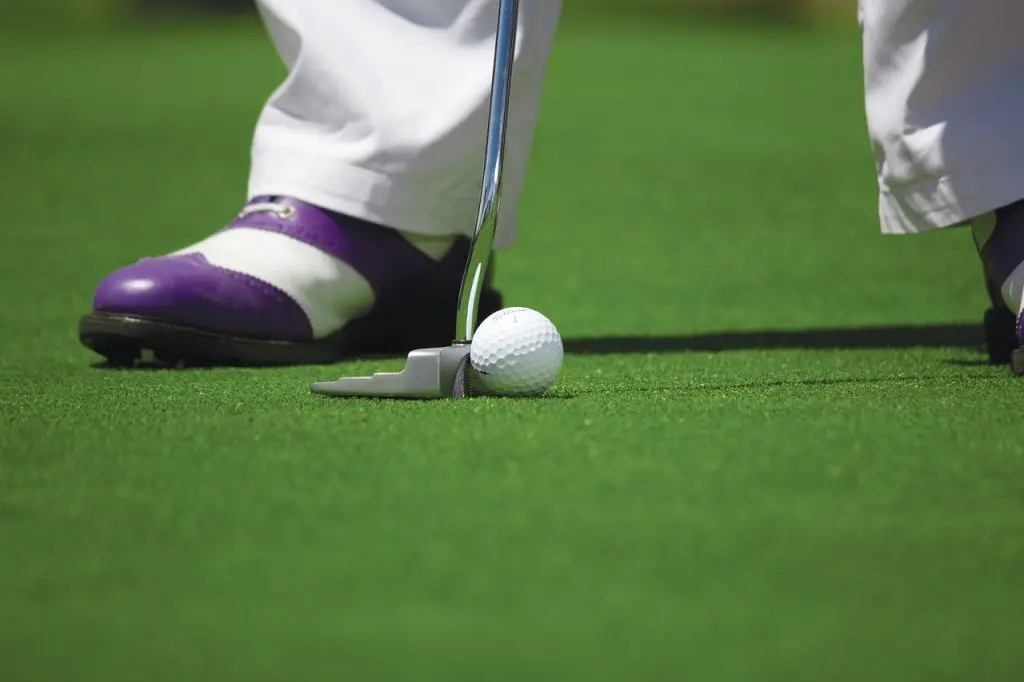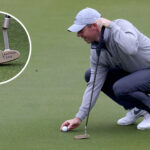Mastering the art of spinning a golf ball is a skill that can elevate your game to the next level. Whether you’re trying to stick your approach shots closer to the pin or impress your playing partners with your finesse around the greens, the ability to impart spin on the ball is invaluable. In this article, we’ll delve into the techniques and tips that can help you spin a golf ball like a pro.
Understanding Spin:
Before diving into the techniques, it’s essential to understand the basics of spin in golf. There are two types of spin: backspin and sidespin. Backspin is the rotational motion of the ball that causes it to climb into the air, creating lift and allowing it to stop more quickly upon landing. Sidespin, on the other hand, can cause the ball to curve left or right in flight.
Techniques to Spin a Golf Ball:
Clean Contact: Achieving clean contact with the ball is crucial for generating spin. Make sure your clubface is square at impact and that you strike the ball with a descending blow. This will help compress the ball against the clubface, creating more friction and spin.
Ball Position: Adjusting your ball position can influence the amount of spin you impart on the ball. For maximum backspin, position the ball slightly forward in your stance, allowing you to catch the ball on the descending part of your swing arc. Conversely, for more sidespin, adjust the ball slightly back in your stance.
Lofted Club: Generally, clubs with more loft, such as wedges, are better suited for generating spin. The increased loft helps get the ball airborne quickly and allows for a steeper angle of descent, ideal for creating backspin.
Acceleration Through Impact: Maintaining a smooth, accelerating swing through impact is essential for generating spin. Avoid decelerating or “scooping” at the ball, as this can lead to inconsistent contact and reduced spin.
Wrist Action: Proper wrist action can greatly influence the amount of spin you generate. On shorter shots around the green, try incorporating some wrist hinge on the backswing and “unhinge” through impact to create more spin.
Groove Maintenance: Keeping your club grooves clean and sharp is vital for maximizing spin. Dirt, grass, and debris can fill the grooves and reduce friction between the clubface and the ball, resulting in less spin. Regularly clean your clubs and consider having them professionally regrooved if necessary.
Practice Drills:
Pitching Practice: Set up a target around 20-30 yards away and practice hitting pitch shots with various clubs, focusing on generating spin to control your distance and trajectory.
Bunker Shots: Practicing bunker shots can also help improve your ability to spin the ball. Experiment with different sand wedges and focus on hitting the sand behind the ball to create a high, spinning shot.
Short Game Challenges: Create short game challenges for yourself that require you to hit specific shots with varying amounts of spin. This can help you develop a feel for how different techniques influence the flight and spin of the ball.
Spinning a golf ball like a pro requires a combination of technique, practice, and feel. By understanding the fundamentals of spin and implementing the proper techniques, you can take your short game to new heights and impress your fellow golfers with your ability to control the ball with precision. So, head to the practice green, hone your skills, and watch as your spin game improves with each swing.
Experiment with Different Grips: The grip you use can also affect your ability to spin the ball. Some golfers find success with a slightly weaker grip, which can promote a more open clubface at impact, allowing for increased loft and spin. Experiment with different grip positions to find what works best for you.
Play for the Bounce: When hitting pitch and chip shots, aim to strike the ball first and then let the club’s bounce interact with the turf. This technique promotes clean contact and helps generate the spin needed to stop the ball quickly on the green.
Understand Green Conditions: The condition of the green can significantly impact your ability to spin the ball. Greens that are soft and receptive will allow for more backspin, while firm, fast greens may require more precise technique to control spin. Pay attention to the conditions and adjust your approach accordingly.
Visualization and Feel: Developing a sense of feel and visualization is essential for mastering the art of spinning a golf ball. Visualize the shot you want to hit, feel the clubface interacting with the ball, and trust your instincts to execute the shot with confidence.
Learn from the Pros: Watch professional golfers and study their techniques for spinning the ball. Pay attention to their setup, swing mechanics, and shot selection, and try to incorporate elements of their game into your own.
Stay Patient and Persistent: Developing the ability to spin a golf ball like a pro takes time and dedication. Stay patient with yourself as you work on refining your technique, and don’t be afraid to experiment with different approaches until you find what works best for you.
Spinning a golf ball like a pro is a skill that can elevate your game and add a new dimension to your shot-making abilities. By understanding the principles of spin, honing your technique, and dedicating time to practice, you can develop the ability to control the flight and spin of the ball with precision. So, embrace the challenge, put in the work, and watch as your short game reaches new heights on the course.
FAQ (Frequently Asked Questions):
Can I generate spin with every club in my bag?
While clubs with more loft, such as wedges, are better suited for generating spin, you can still create some spin with other clubs. However, the amount of spin will be less pronounced compared to lofted clubs like wedges.
How do I know how much spin to apply to different shots?
The amount of spin you apply will depend on factors such as distance to the target, green conditions, and the shot’s trajectory you want to achieve. Experimenting during practice sessions and developing a feel for different shots will help you determine the appropriate amount of spin for each situation.
Should I use a specific type of golf ball to maximize spin?
Golf balls with softer covers are generally better suited for generating spin as they allow the clubface to “grab” the ball more effectively. However, the choice of golf ball depends on personal preference and playing conditions, so it’s essential to experiment and find a ball that works best for your game.
How can I practice spinning the ball without being on the golf course?
You can practice spinning the ball at home or on the driving range using practice mats or a hitting net. Focus on grooving your swing mechanics and experimenting with different techniques to create spin.
Are there any drills I can do to improve my ability to spin the ball?
Yes, there are several drills you can incorporate into your practice routine to improve your ability to spin the ball. For example, practicing pitch shots to specific targets, hitting bunker shots to different flag positions, and playing short game challenges can all help develop your spin control.
How can I troubleshoot if I’m struggling to generate spin?
If you’re having trouble generating spin, start by checking your setup and swing mechanics. Ensure that your clubface is square at impact, your ball position is appropriate, and you’re making clean contact with the ball. Additionally, consider consulting with a golf instructor who can provide personalized feedback and guidance.
By addressing these frequently asked questions, you can gain a deeper understanding of how to spin a golf ball effectively and troubleshoot any challenges you may encounter along the way. Keep practicing, stay patient, and enjoy the journey of mastering this essential aspect of the game.







